Imagine stepping into your backyard, where every corner whispers comfort and invites you to relax. Whether you’re just starting to dabble in outdoor design or have years of experience, our guide, “8 Outdoor Comfort Ideas for Your Next Project,” is your ticket to creating a sanctuary that blends beauty with practicality. These ideas are crafted to spark joy and inspire confidence, ensuring your outdoor space becomes a cherished extension of your home.
From cozy seating to ambient lighting, each idea is packed with practical benefits that will enhance your outdoor living experience. This guide is a treasure trove of possibilities, helping you craft spaces that not only look stunning but also offer unparalleled comfort. Get ready to transform your backyard into a welcoming haven where memories are made and relaxation reigns supreme.
Select Durable Weather-Resistant Fabrics
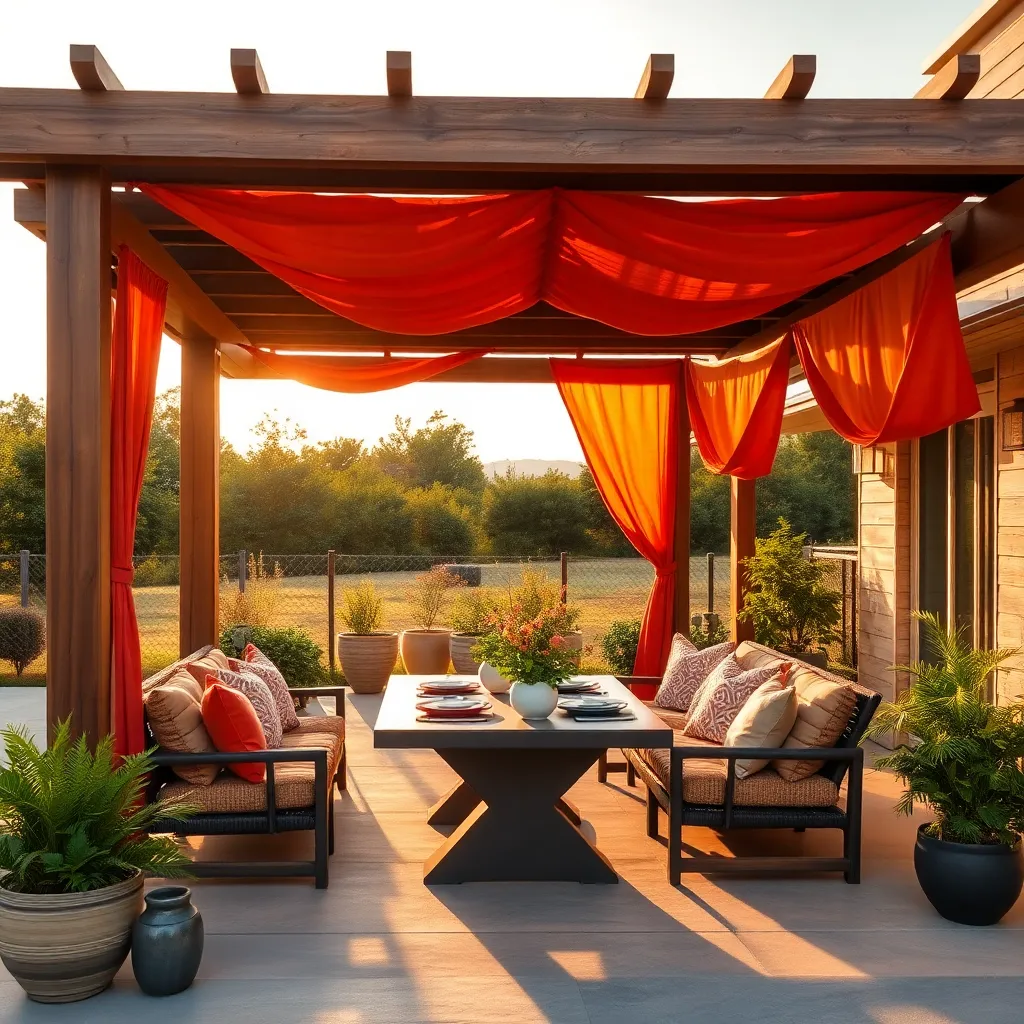
When selecting fabrics for your outdoor shelter, prioritize those that offer durability and weather resistance. Materials such as solution-dyed acrylic, polyester with polyurethane coating, and vinyl are excellent choices, as they withstand sun exposure, rain, and wind. For beginners, start with solution-dyed acrylic, which is both UV-resistant and maintains its color over time. Advanced users might explore custom vinyl options, which provide superior waterproofing and are ideal for areas with heavy rainfall.
Consider the design elements that will complement your outdoor space while ensuring functionality. Use fabrics with a minimum width of 54 inches to reduce the number of seams, enhancing both appearance and strength. For a polished look, mix patterns and textures, such as pairing solid colors with subtle stripes. Ensure your fabric choices are compatible with your shelter’s frame—for instance, lightweight polyester works well with portable structures, while heavier fabrics suit permanent installations.
Incorporate Multi-Use Furniture Pieces
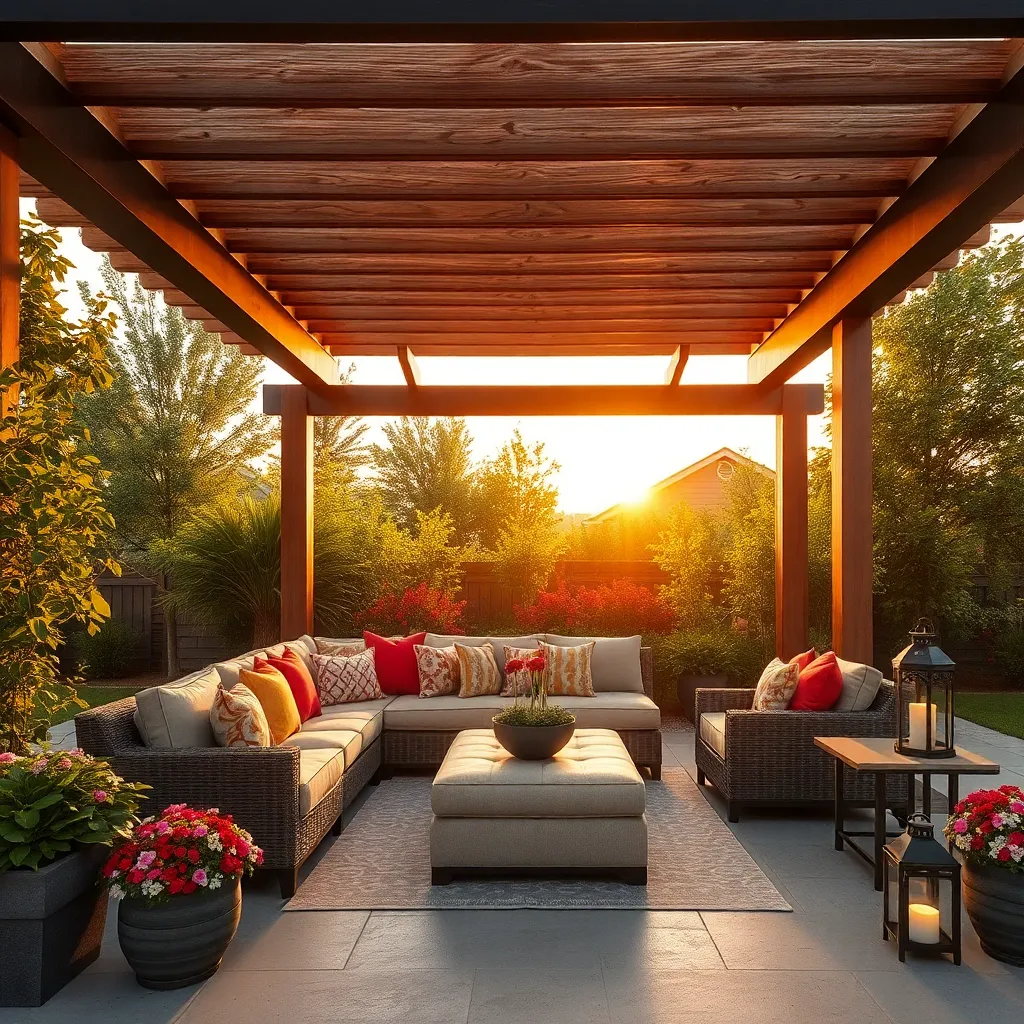
Integrating multi-use furniture pieces into your outdoor shelter can dramatically enhance both functionality and aesthetics. Consider benches with built-in storage, which not only provide seating but also offer a convenient place to tuck away cushions or gardening tools. Opt for materials like weather-treated wood or powder-coated metal to ensure durability against the elements, and think about incorporating foldable or stackable designs to save space when not in use.
For those looking to elevate their outdoor living space, a convertible table that transforms from a dining surface to a coffee table offers versatile options for entertaining. Select furniture with adjustable features, such as backs that recline or tables with extendable tops, to easily adapt your setup to various activities. Advanced gardeners might even consider custom-built pieces, using reclaimed wood or metal, for a unique touch that suits their specific needs and tastes. Remember, choosing the right multi-use furniture can make your outdoor area more inviting and efficient, encouraging more time spent enjoying the fresh air.
Add Portable Shade Structures
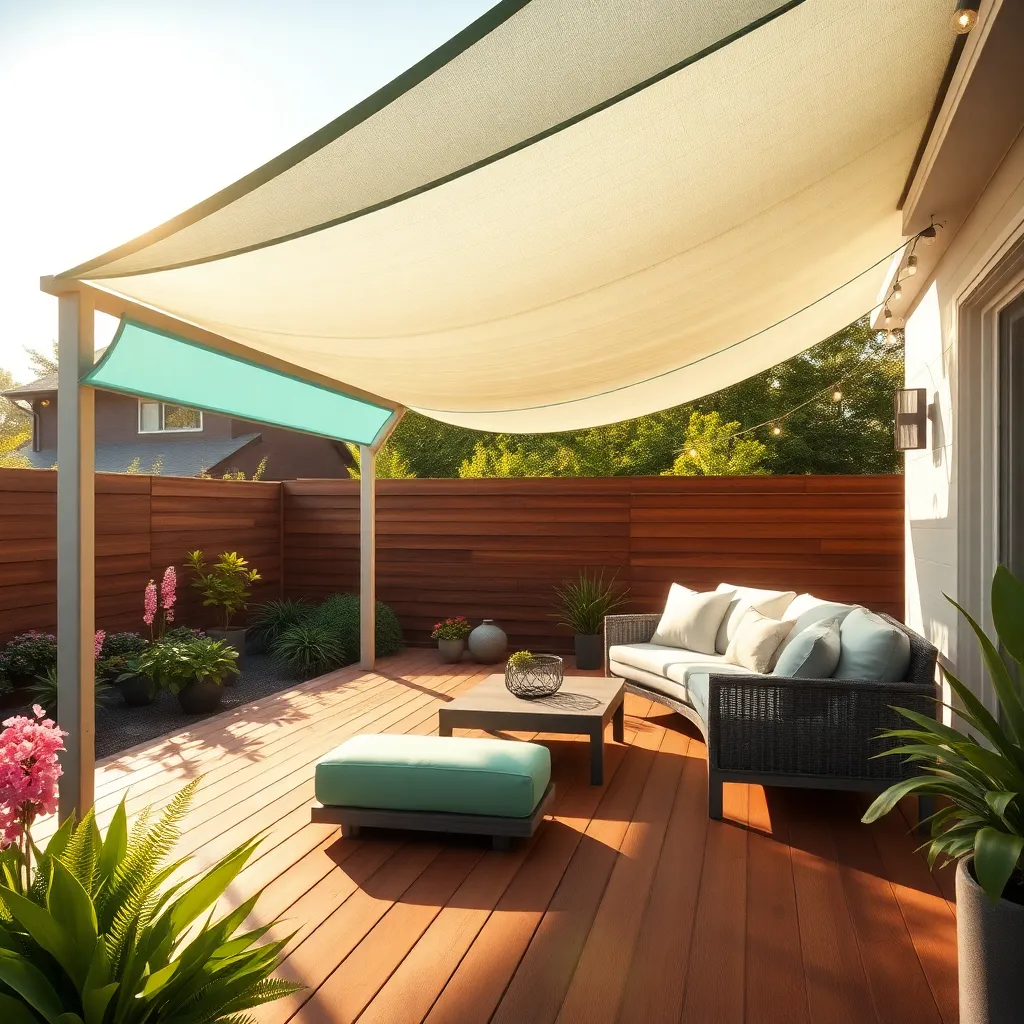
Portable shade structures are a versatile addition to any outdoor space, offering both functionality and style. Consider using retractable awnings or pop-up canopies for easy setup and removal, allowing you to adapt your space as needed. When selecting materials, opt for UV-resistant fabrics to ensure durability and protection against harsh sunlight. Look for options with adjustable features, like tilting mechanisms or side panels, so you can customize the shade coverage throughout the day.
For a more sophisticated touch, explore pergolas with retractable canopies or sail shades that can be easily adjusted. Advanced options include motorized systems that allow you to control the shade with minimal effort. Ensure your chosen structure is appropriately anchored, especially in areas prone to wind. Use strong, weather-resistant materials like powder-coated aluminum or treated wood for the frame to enhance longevity and stability. By integrating these elements, you create a comfortable and adaptable outdoor environment perfect for any gathering.
Utilize Natural Windbreaks Strategically
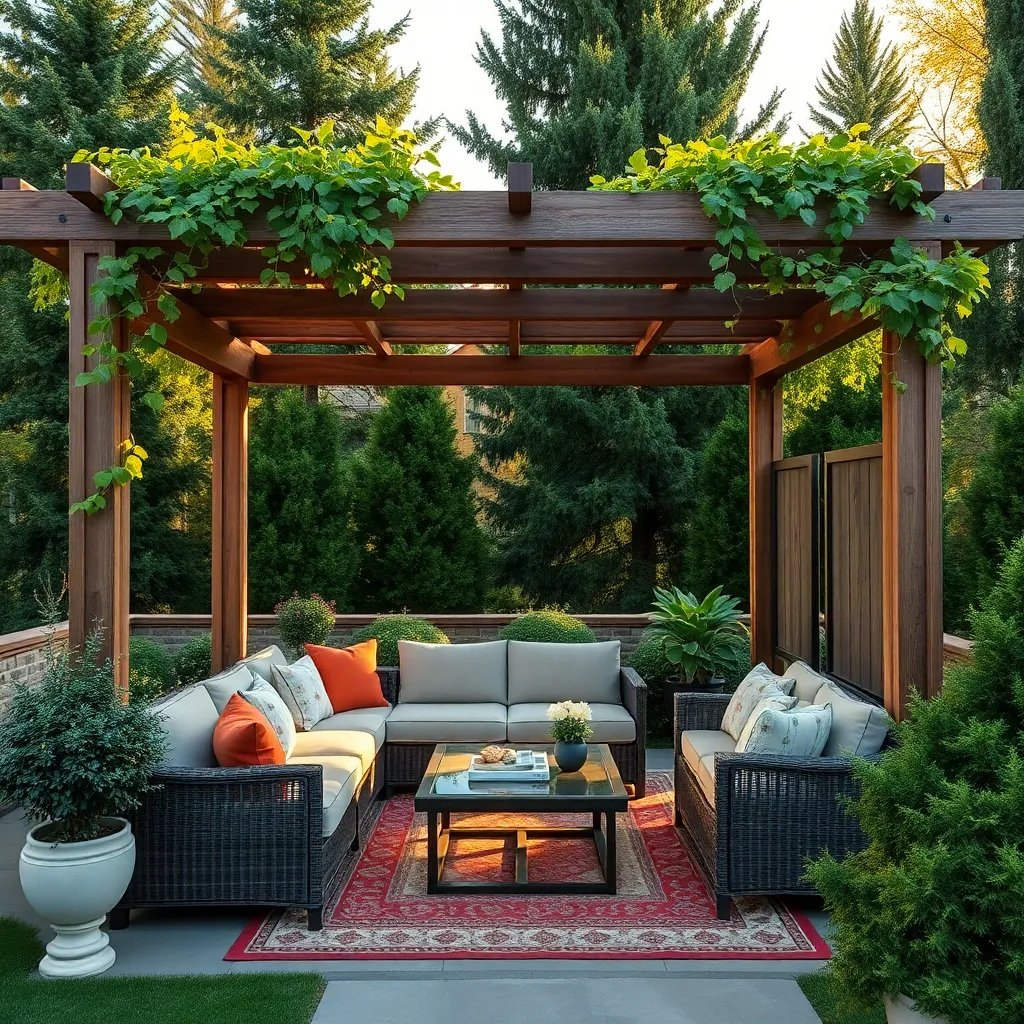
Incorporating natural windbreaks into your outdoor space is a smart way to enhance comfort without detracting from the landscape. Strategically positioning trees and shrubs can effectively cut down on harsh winds, creating a more pleasant environment. Opt for hardy species like spruce or juniper that can withstand wind and offer year-round protection. Plant them in staggered rows for maximum wind reduction and ensure they are at least 10-15 feet away from your living area to prevent root interference.
For a more structured approach, consider building a lattice or trellis using materials like cedar or redwood, which are both durable and aesthetically pleasing. Train climbing plants such as ivy or clematis to cover these structures, adding a natural element that also acts as a windbreak. This not only helps block wind but also adds privacy and a lush, green backdrop to your outdoor area. For advanced gardeners, integrating a mix of evergreen and deciduous plants can provide a balance of dense coverage in winter and open airiness in summer.
Opt for Eco-Friendly Heating Options

When considering eco-friendly heating options for your outdoor space, start by exploring solar-powered heaters. These heaters harness the sun’s energy, making them both sustainable and cost-effective in the long run. For beginners, installing a freestanding solar heater is a straightforward option that requires minimal setup. For those with a bit more experience, consider integrating solar panels into your shelter’s roof to power multiple outdoor heating devices, ensuring a consistent and renewable energy source throughout the colder months.
Another excellent choice for eco-conscious homeowners is investing in a biomass heater. These heaters use organic materials like wood pellets or chips, providing a natural and efficient heating solution. For those new to biomass heating, a small, portable unit can be a great introduction, offering both mobility and ease of use. Experienced gardeners might opt for a built-in biomass stove as a permanent fixture in their outdoor shelter, ensuring a cozy atmosphere while reducing carbon footprint. Always ensure proper ventilation and follow local regulations when installing these systems to maximize safety and efficiency.
Create Cozy Seating Arrangements
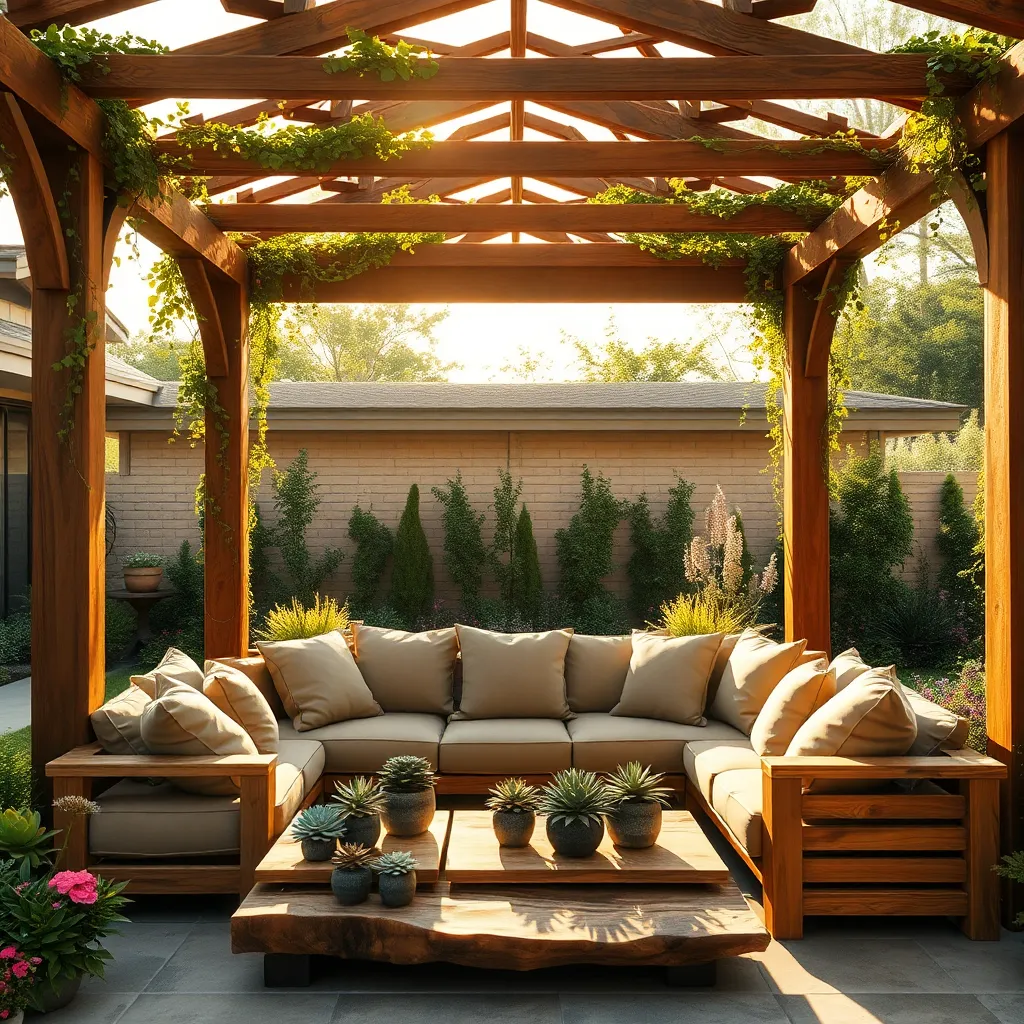
Transforming your outdoor space into a cozy haven starts with thoughtful seating arrangements. Consider using weather-resistant materials like teak or powder-coated aluminum for durability against the elements. Arrange seats in a circle or semi-circle to foster conversation and intimacy. For a beginner-friendly tip, use outdoor rugs to define the seating area, making it feel more inviting and contained.
Advanced designers can elevate the space by adding layers of comfort with throw pillows and blankets made from outdoor-friendly fabrics such as solution-dyed acrylic. Incorporate mixed seating options, like benches, lounge chairs, and even hammocks, to provide variety and accommodate different preferences. For those willing to invest a bit more, custom-built seating with integrated storage offers both functionality and a polished look.
Enhance Ambiance with String Lights
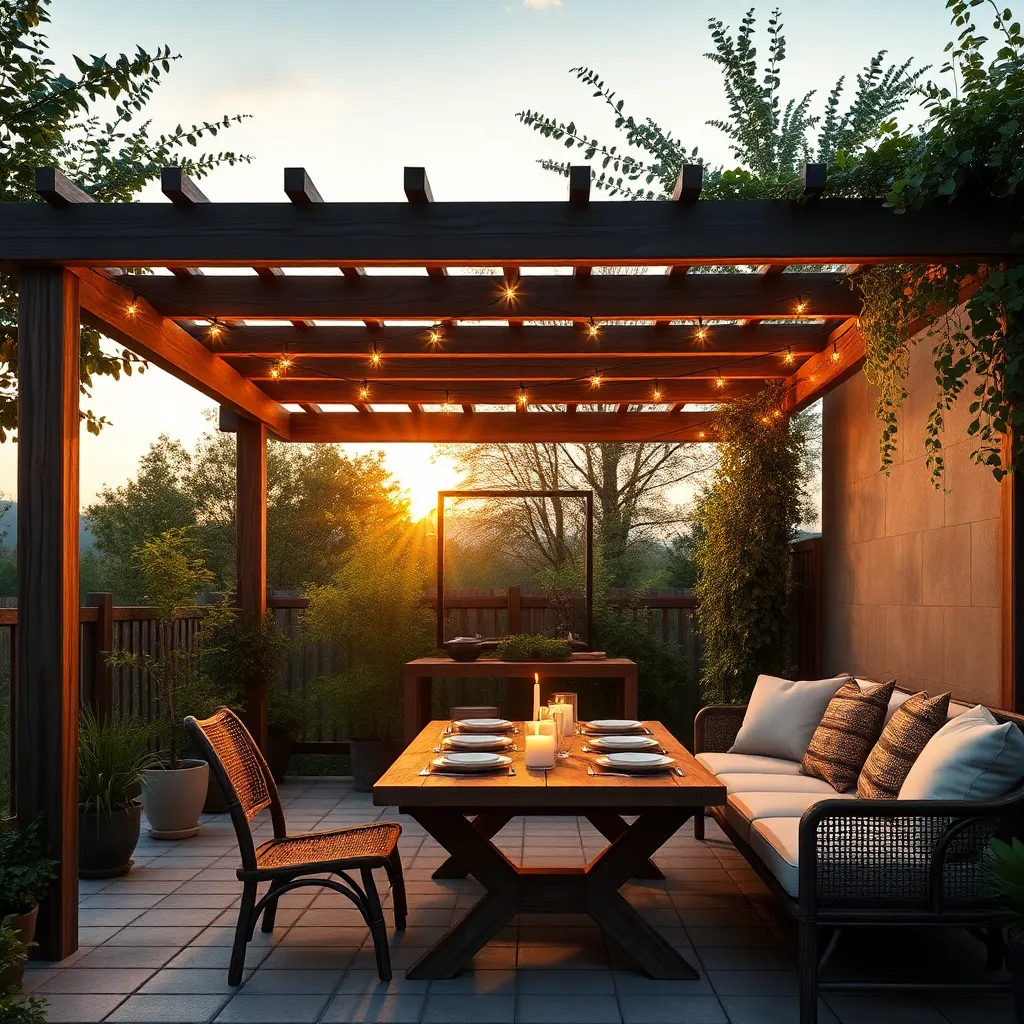
Transform your outdoor space into a magical retreat by incorporating string lights, a simple yet impactful way to enhance ambiance. Opt for weather-resistant, LED string lights for durability and energy efficiency. These lights are available in various styles, such as globe, fairy, or Edison bulbs, allowing you to choose based on your preferred aesthetic. For beginners, start by draping lights along your patio’s edge or across a pergola, securing them with zip ties or hooks. This straightforward setup creates a cozy atmosphere with minimal effort.
For a more advanced touch, consider crafting a light canopy by crisscrossing strings overhead, which works beautifully in larger areas or when framing a specific zone, like a dining space. Use sturdy poles or tall trees as anchor points, ensuring each light strand is taut to prevent sagging. To achieve a well-distributed glow, space lights evenly and at uniform heights. Dimmer switches can also be added for adjustable light levels to suit any occasion. This versatile lighting solution not only enhances warmth but also extends the usability of your outdoor space into the evening.
Employ Smart Irrigation Solutions
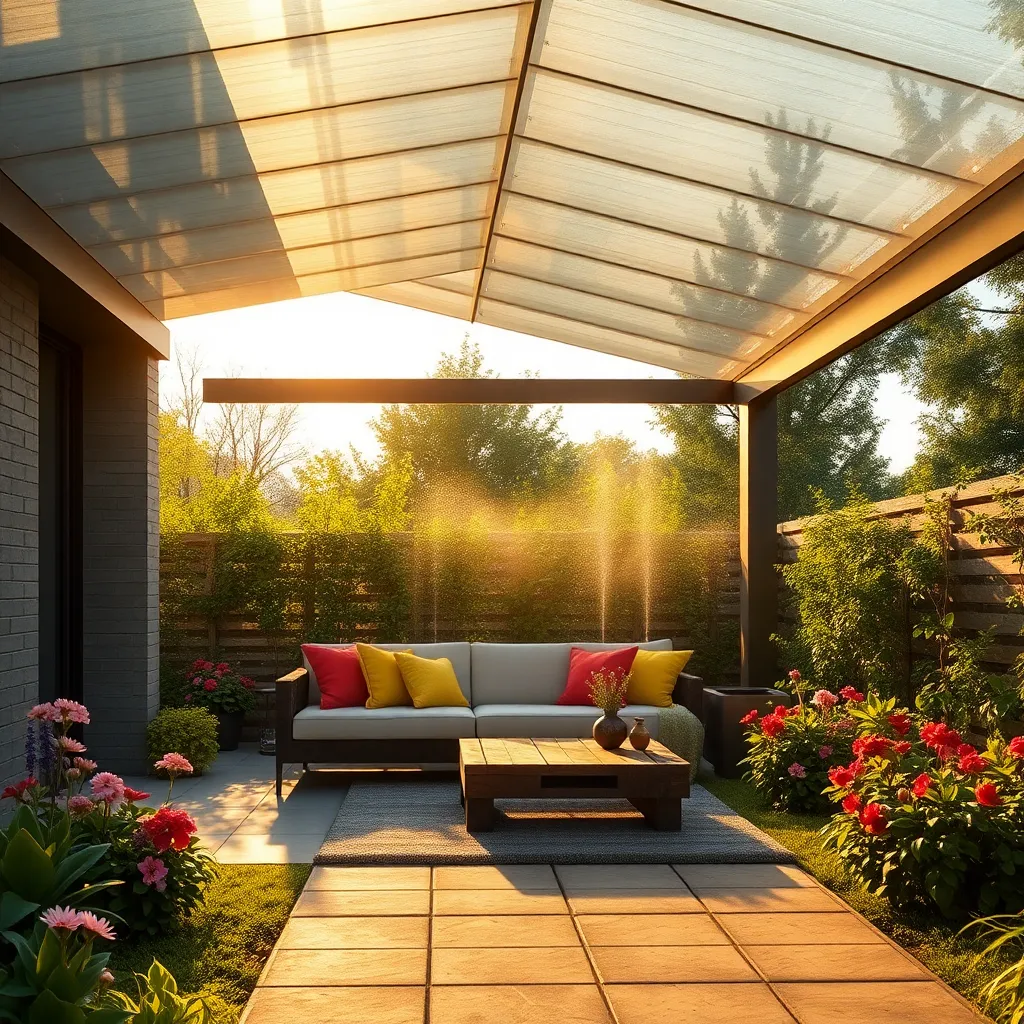
Employing smart irrigation solutions can significantly enhance the comfort and efficiency of your outdoor space. Start by installing a drip irrigation system, which efficiently delivers water directly to the roots of your plants, minimizing waste and ensuring optimal hydration. For those seeking a more advanced setup, consider integrating weather-based smart controllers that adjust watering schedules based on local weather conditions, saving water and reducing your utility bills.
Incorporating these systems into your outdoor projects does not have to be daunting. Use flexible tubing and adjustable emitters to customize water flow for various plant types and garden layouts. For beginners, a basic kit from a home improvement store can provide all the necessary components to get started. Meanwhile, experienced gardeners might explore integrating soil moisture sensors that communicate with your irrigation system, ensuring your plants receive water only when they truly need it. This approach not only supports plant health but also helps maintain a serene, water-conserving environment.
Conclusion: Creating Beautiful Outdoor Spaces
As you embark on your next outdoor project, the eight key relationship concepts we’ve explored—communication, quality time, compromise, shared interests, support, trust, appreciation, and personal space—serve as your toolkit for creating a nurturing and harmonious environment. These elements don’t just apply to crafting a cozy outdoor space; they are the building blocks of a thriving relationship.
To put these insights into action, choose one concept that resonates most with your current relationship dynamics and dedicate the next week to actively nurturing it. Whether it’s setting aside time for uninterrupted conversations or planning a shared activity that brings you closer, small yet intentional steps can make a significant difference.
Remember, successful relationships are built on continuous learning and adaptation. Bookmark this article to revisit these concepts whenever you need a reminder or a fresh perspective. By doing so, you’re investing in a legacy of love and understanding that can weather any season.
As you move forward, envision a relationship that not only flourishes but also inspires others. The journey to relationship success is ongoing, and with these tools at your disposal, you’re well-equipped to make every moment meaningful. Save this article as your go-to guide for nurturing and sustaining the love you cherish.
